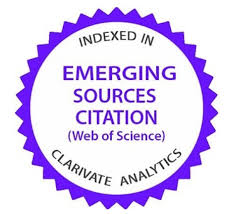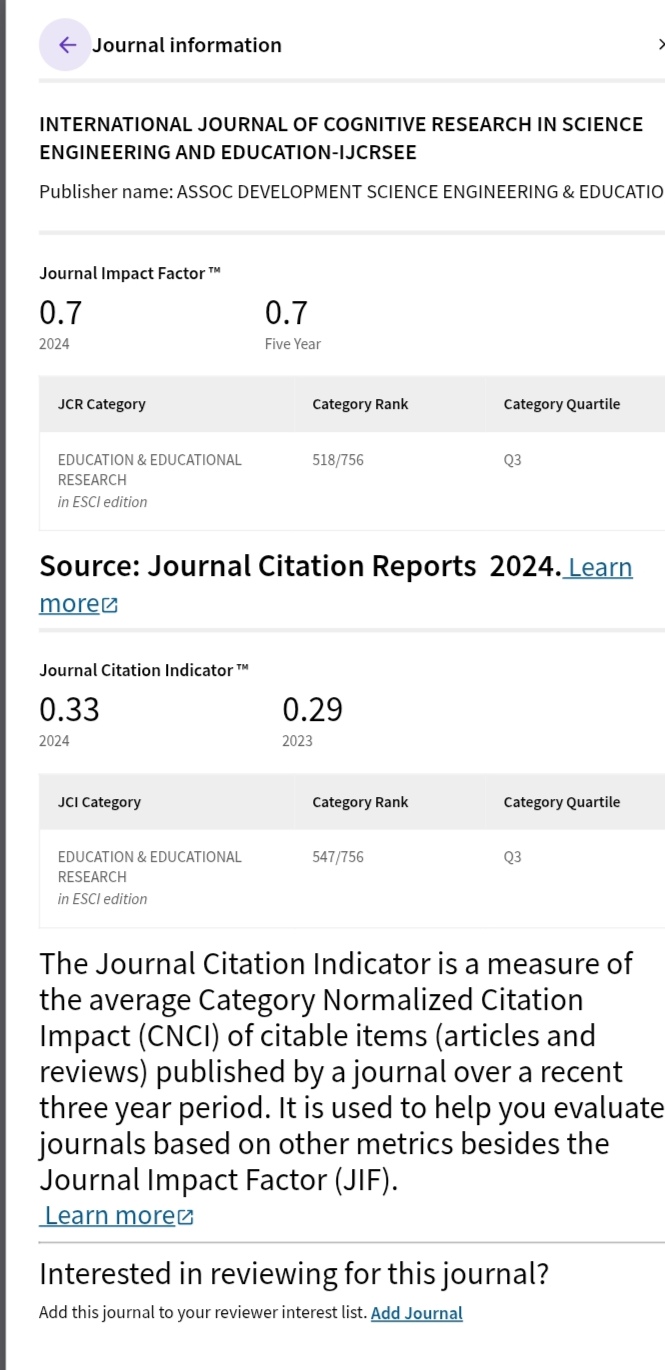Educational Challenges of Roma Minorities: The Case of the Republic of North Macedonia
DOI:
https://doi.org/10.23947/2334-8496-2020-8-3-113-122Keywords:
Roma people, biliteracy, unequal educational opportunities, ethnicity education, literacy practicesAbstract
Linguistic diversity comes in various forms. The most common ways of developing knowledge of more than one language according to some authors are either by learning a second language through participation in some form of bilingual education or being raised in a bilingual environment, such as school or a bilingual family. The phenomenon of development of literacy competencies of minority groups, specifically, the context of Roma people, in the Republic of North Macedonia, whose mother tongue is not even considered a standard language is the main research purpose of this paper. Research conducted in comparative studies on integrated education shows that in the elementary schools with high numbers of Roma students actions are rarely taken to enhance the integration of these minority students, because of 1) the lack of iconography, which is important for the ethnic identity of this minority and 2) low competence level of parents and teachers who are not adequately trained to work with students coming from different linguistic backgrounds or social backgrounds that are characterized by low literacy levels and low learning competences. Participants in this study were from several primary schools in North Macedonia and the responses were categorized according to the major themes that occurred. The findings show how women are excluded from obtaining better education and that multilingual children from deprived economic settings with poorly educated parents struggle and are seriously challenged to obtain proper literacy and education in elementary schools. The study reveals important details about the educational legislation, treatment of Roma people by local and international organizations and provides suggestions for improvement of the current status of the Roma population.
Downloads
References
Avery, H., & Hoxhallari, I. (2017). From policy to practice: Roma education in Albania and Sweden. The Urban Review, 49(3), 463-477. https://doi.org/10.1007/s11256-016-0394-5
Barton, D., Hamilton, M., & Ivanic, R. (2000). Situated literacies: Reading and writing in context. Psychology Press.
Baynham, M., & De Fina, A. (Eds.). (2005). Dislocations/relocations: Narratives of displacement. Manchester: St. Jerome.
Brüggemann, C. (2012). Roma education in comparative perspective. Analysis of the UNDP/World Bank/EC Regional Roma Survey, (Bratislava: UNDP, 2012). Retrieved from http://issuu.com/undp_in_europe_cis/docs/education_web?e=3029457/1363948
Centre for Human Rights and Conflict Resolution (2012). Истражување на појдовната состојба во врска со меѓуетничката интеграција во образованието. [Research on early stages of interethnic integration in education].
Courthiade, M. (2007). La literature des Rromes [Aroma literature], Sintes et Kales, Inalco.
Cvikić, L., Petroska, E., Novak, M. J., Vuković, P., & Trenevski, T. (2013). Prvi, drugi, ini jezik: Hrvatsko-makedonske usporedbe. [First, second and other language: Croatian-Macedonian comparisons] Zagreb: Hrvatsko filološko društvo.
Elias, S. B. (2010). Regional minorities, immigrants, and migrants: The reframing of minority language rights in Europe. Berkley Journal of International Law (BJIL), 28(1), 261–312. Retrieved from https://digitalcommons.law.yale.edu/student_papers/79
Fleck, G., & Rughinis, C. (2008). Come closer. Inclusion and exclusion of Roma in present day Romanian society. Cosima Rughinis.
Gaber-Damjanovska, N. (2012). Housing of the Poor - Focus on Roma in the Republic of Macedonia, for the Habitat Macedonia Project Promotion of the Housing Rights of Roma. Skopje: Habitat for Humanity Macedonia.
Galasińska, A., & Horolets, A. (2012). The (pro) long (ed) life of a “grand narrative”: the case of Internet forum discussions on post-2004 Polish migration to the United Kingdom. Text & Talk, 32(2), 125-143. https://doi.org/10.1515/text-2012-0007
Gallego, M. A., & Hollingsworth, S. (Eds.). (2000). What counts as literacy?: Challenging the school standard. Teachers College Press.
Garaz, S. (2014). Helping the marginalised or supporting the elite? Affirmative action as a tool for increasing access to higher education for ethnic Roma. European Educational Research Journal, 13(3), 295-311. https://doi.org/10.2304/eerj.2014.13.3.295
Gee, J. P. (1996). Social Linguistics and Literacies: Ideology in Discourses (2nd Ed)(London, Falmer).
Hirvonen, V. (2008). ‘Out on the fells, I feel like a Sámi’: Is There Linguistic and Cultural Equality in the Sámi School?. In Can Schools Save Indigenous Languages? (pp. 15-41). Palgrave Macmillan, London. https://doi.org/10.1057/9780230582
Hornberger, N. H. (1989). Continua of Biliteracy. Review of Educational Research, 59(3), 271–296. https://doi.org/10.3102/00346543059003271
Horner, B., Lu, M. Z., Royster, J. J., & Trimbur, J. (2011). Language difference in writing: Toward a translingual approach. College English, 73(3), 303-321. Retrieved from https://ir.library.louisville.edu/cgi/viewcontent.cgi?article=1065&context=faculty
Hull, G. Schultz, K. (2001). Literacy and learning out of school: A review of theory and research. Review of Educational Research, 71(4), 575-611. https://doi.org/10.3102/00346543071004575
Lu, M. Z., & Horner, B. (2016). Introduction: Translingual Work. College English, 78(3), 207-218. Retrieved from https://ir.library.louisville.edu/cgi/viewcontent.cgi?referer=https://scholar.google.com/&httpsredir=1&article=1062&context=faculty
Kamberi, E., Martinovic, B., & Verkuyten, M. (2015). Life satisfaction and happiness among the Roma in central and southeastern Europe. Social Indicators Research, 124(1), 199-220. https://doi.org/10.1007/s11205-014-0783-7
Kresova, N. (2012). Storytelling on Web 2.0: The case of migrants’ personal blogs. Narrative Matters.
Lee, R. (2007). Learn Romani: Das-duma Rromanes. Hertfordshire: University of Hertfordshire Press.
Levinson, M. P. (2007). Literacy in English Gypsy Communities: Cultural Capital Manifested as Negative Assets. American Educational Research Journal, 44(1), 5–39. https://doi.org/10.3102/0002831206298174
Matras, Y. (2002). Romani: A linguistic introduction. Cambridge University Press.
Ministry of Labour and Social Policy of Republic of Macedonia, Strategy for Roma in the Republic of Macedonia, (2005). Skopje: Ministry of Labour and Social Policy of Republic of Macedonia.
Ministry of Labour and Social Policy of Republic of North Macedonia, Strategy for Roma in the Republic of Macedonia 2014-2020, (2014). Skopje: Ministry of Labour and Social Policy of Republic of North Macedonia.
Miskovic, M., & Curcic, S. (2016). Beyond inclusion: Reconsidering policies, curriculum, and pedagogy for Roma students. International Journal of Multicultural Education, 18(2), 1–14. Retrieved from https://eric.ed.gov/?id=EJ1104920
Murphy, V. A. (2014). Second Language Learning in the Early School Years: Trends and Contexts-Oxford Applied Linguistics. Oxford University Press.
O’Hanlon, C. (2016). The European Struggle to Educate and Include Roma People: A Critique of Differences in Policy and Practice in Western and Eastern EU Countries. Social Inclusion, 4(1), 1-10. http://dx.doi.org/10.17645/si.v4i1.363
Okely, J. (1983). The traveller-gypsies. Cambridge University Press.
Outakoski, H. (2015). Multilingual literacy among young learners of North Sámi: contexts, complexity and writing in Sápmi (Doctoral dissertation, Umeå University).
Panev, V., & Barakoska, A. (2015). The need of strengthening the pedagogical competences in teaching from the english teachers’ perspective. International Journal of Cognitive Research in Science, Engineering and Education (IJCRSEE), 3(1), 43–50. Retrieved from https://ijcrsee.com/index.php/ijcrsee/article/view/74
Rizova, E. (2015). Adults and literacy, Skopje: Faculty of philosophy – Skopje.
Street, B. V. (2002). Literacy and development: Ethnographic perspectives. Routledge.
Szalai, J., & Schiff, C. (Eds.). (2014). Migrant, Roma and Post-colonial Youth in Education Across Europe: Being’visibly Different’. Springer.
UNESCO Institute for Statistics, (2011). Education Indicators and Data Analyses, UNESCO.
UNESCO (2006). Literacy for Life. EFA Global Monitoring Report. Retrieved from http://unesdoc.unesco.org/images/0014/001416/141639e.pdf
Published
How to Cite
Issue
Section
Categories
License
Copyright (c) 2020 Elena Rizova, Mira Bekar, Zoran Velkovski

This work is licensed under a Creative Commons Attribution 4.0 International License.
Plaudit
Accepted 2020-12-07
Published 2020-12-20











